Inishowen in County Donegal is Ireland’s largest peninsula and includes Ireland’s most northerly point at Malin Head. Prior to the marketing of the Wild Atlantic Way, the ‘Inishowen 100’ was a well-known tourist route that took in much of the beautiful scenery of the area.

My first port of call on the peninsula was at Dunree Head, the site of a former British Fort that guarded the strategically important deep anchorage of Lough Swilly.

Looking across Lough Swilly towards the Fanad Peninsula.
Lough Swilly has witnessed many major historic events. It was from Rathmullan on the Fanad Shore that O’Neill and O’ Donnell fled into exile, in what was known as The Flight Of the Earls in 1607, following the defeat of the Irish chieftains by the British at the Battle Of Kinsale
In 1798 Wolfe Tone was taken under naval arrest to Buncrana port and it was near this spot that a small fort was built at Dunree to guard against a possible French invasion.
The fort was expanded in the late 19th century and during World War 1 it stood guard over Admiral Lord Jellicoe’s fleet that lay at anchor in the deep Swilly waters prior to engaging the German Navy at the Battle of Jutland. Even after Irish Independence, the British maintained a presence here up to just before World War II.
Onward then to see some of Inishowen’s lovely coastline, although visibility was not great and heavy rain was promised so it was a race against the elements to see as much as possible. There are beautiful beaches at almost every turn, not always safe for swimming as there are powerful currents running here. Here too at Lagg are some of the highest sand dunes in Europe.
Just a couple of weeks before I visited there was great excitement at Malin Head when the Star Wars film crew arrived to film some scenes for a new series. The excitement continues as dozens of Star Wars devotees undertake a pilgrimage to the area.
Malin Head is known throughout Ireland and Great Britain as Malin is a sea-area for maritime shipping forecasts. There is a weather station here, often recording Storm Force 12 winds in winter. There was barely a breeze when I visited which was rather disappointing, so I had to sit on a stone and imagine the Star Wars Force surrounding me instead! The actual most northerly point is named Banba’s Crown. Here too are a watchtower dating from the Napelonic Wars in 1805 and a 1902 Signal Station. Banba’s Crown is well known nowadays too as a site for spectacular Aurora Borealis sightings in the dark unpolluted skies at Malin Head.
There are interesting geological features along the coast.
I loved this little pebbly beach along the roadside and I enjoyed watching the parents of these ducklings steering their brood through the water! At this point the heavens opened and much of the beautiful seascapes disappeared into the mist. 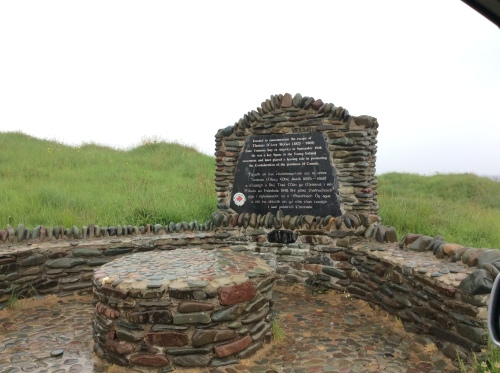
I was delighted to happen on this memorial to Young Irelander,Thomas D’Arcy McGee a native of Carlingford, Co Louth who, charged with treason after the failed 1848 rebellion, made his escape to the USA from this dangerous coastline. He went on to be known as the father of Canadian Confederation. Ironically he was assassinated by Fenians in 1868.
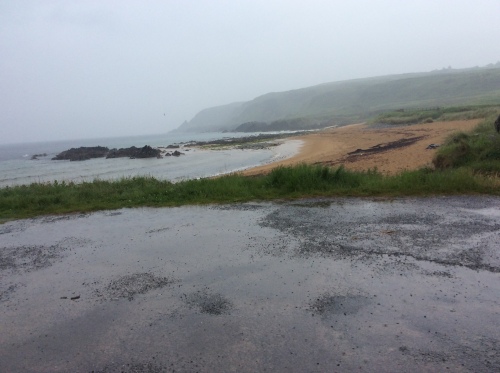
Tremone Bay
I finally arrived on the eastern coastline of Inishowen, where the small towns of Moville and Greencastle sit on the shores of Lough Foyle. Moville was a point of embarkation to Canada and USA for thousands of emigrants in the second half of the 19th Century. The little fishing village of Greencastle is home to a Fishing Museum with some interesting artefacts from days gone by, and it has a very nice tea rooms!
As I leave Inishowen, there was a compulsory stop to be made at the Grianan of Aileach,a series of forts that stand 800 feet above sea level. Dating from 1,700 BC, Grianan of Aileach features on a 2nd Century map of the world.
On a clear day the views from here are stunning and even on a not so clear day it was an appropriate spot to have a last view lovely Lough Swilly.
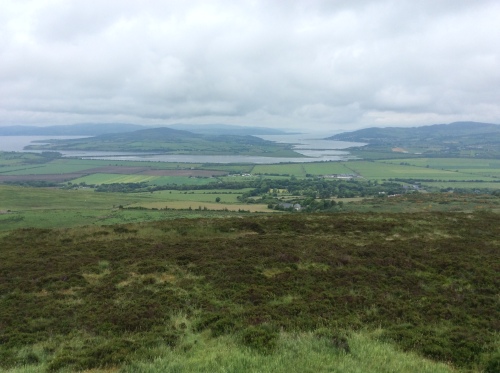









































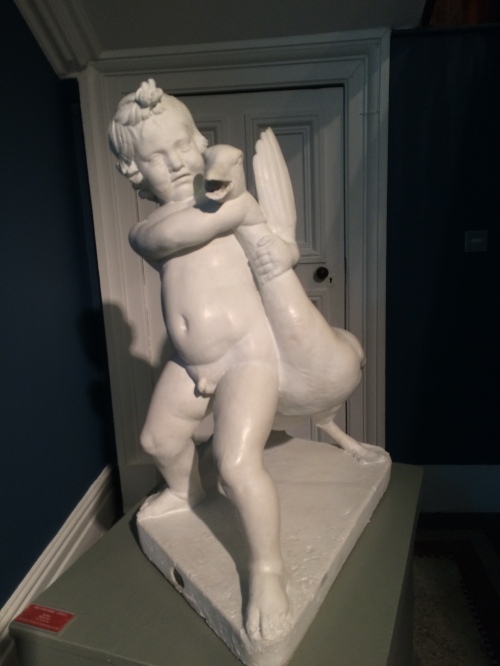 I dropped into the Crawford Art Gallery in Cork this morning for coffee. This was my first visit to this really impressive space, housed in the former Custom House dating from 1724 with later additions.
I dropped into the Crawford Art Gallery in Cork this morning for coffee. This was my first visit to this really impressive space, housed in the former Custom House dating from 1724 with later additions.


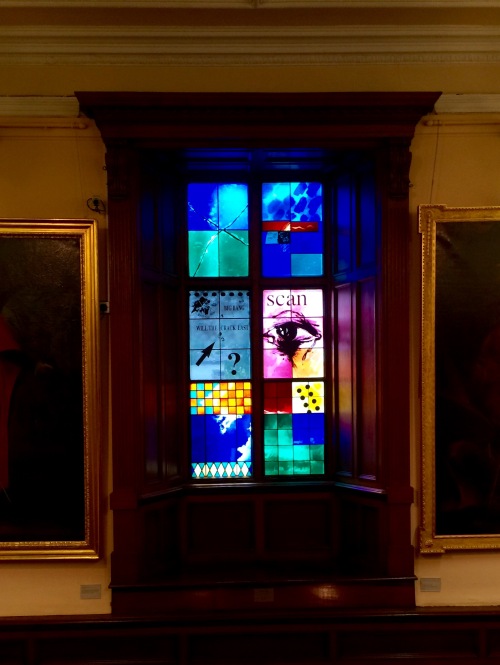
















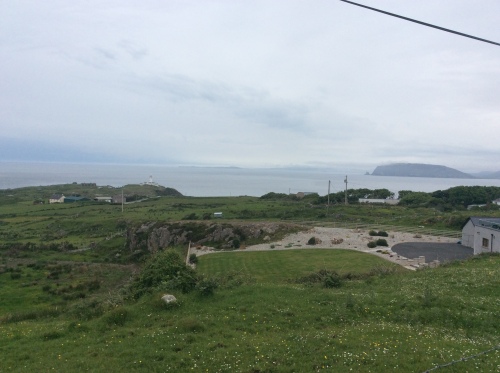



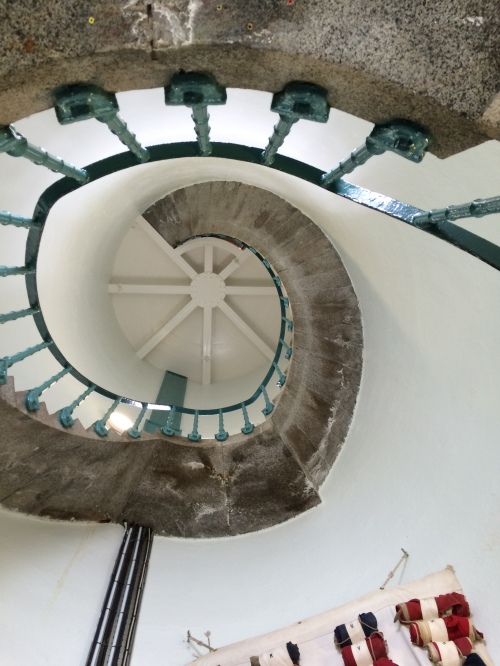




 Heading away towards Portsalon I enjoyed a catch up with a cousin before taking the very spectacular Glenalla Road that runs along the cliffs and shores of Lough Swilly. At Ballymastoker Strand is a memorial to the crew of HMS Saldanha shipwrecked in a storm off Fanad Head on 4 December 1811 with 253 aboard. It is thought she went aground on rocks when attempting to make for shelter in Lough Swilly. There were no survivors and for weeks afterwards some 200 or so bodies were washed up on the strand. Some months later a bird was shot about 20 miles away and it turned out to be the ships parrot with a silver collar engraved ”Captain Packenham of His Majesty’s Ship Saldanha”. (Packenham was a brother in -law to the Duke of Wellington of Waterloo fame). I wonder what happened to the collar! As a direct result of the loss of the Saldanha plans were drawn up to build a lighthouse at Fanad Head, which was turned on in March 1817.
Heading away towards Portsalon I enjoyed a catch up with a cousin before taking the very spectacular Glenalla Road that runs along the cliffs and shores of Lough Swilly. At Ballymastoker Strand is a memorial to the crew of HMS Saldanha shipwrecked in a storm off Fanad Head on 4 December 1811 with 253 aboard. It is thought she went aground on rocks when attempting to make for shelter in Lough Swilly. There were no survivors and for weeks afterwards some 200 or so bodies were washed up on the strand. Some months later a bird was shot about 20 miles away and it turned out to be the ships parrot with a silver collar engraved ”Captain Packenham of His Majesty’s Ship Saldanha”. (Packenham was a brother in -law to the Duke of Wellington of Waterloo fame). I wonder what happened to the collar! As a direct result of the loss of the Saldanha plans were drawn up to build a lighthouse at Fanad Head, which was turned on in March 1817.















